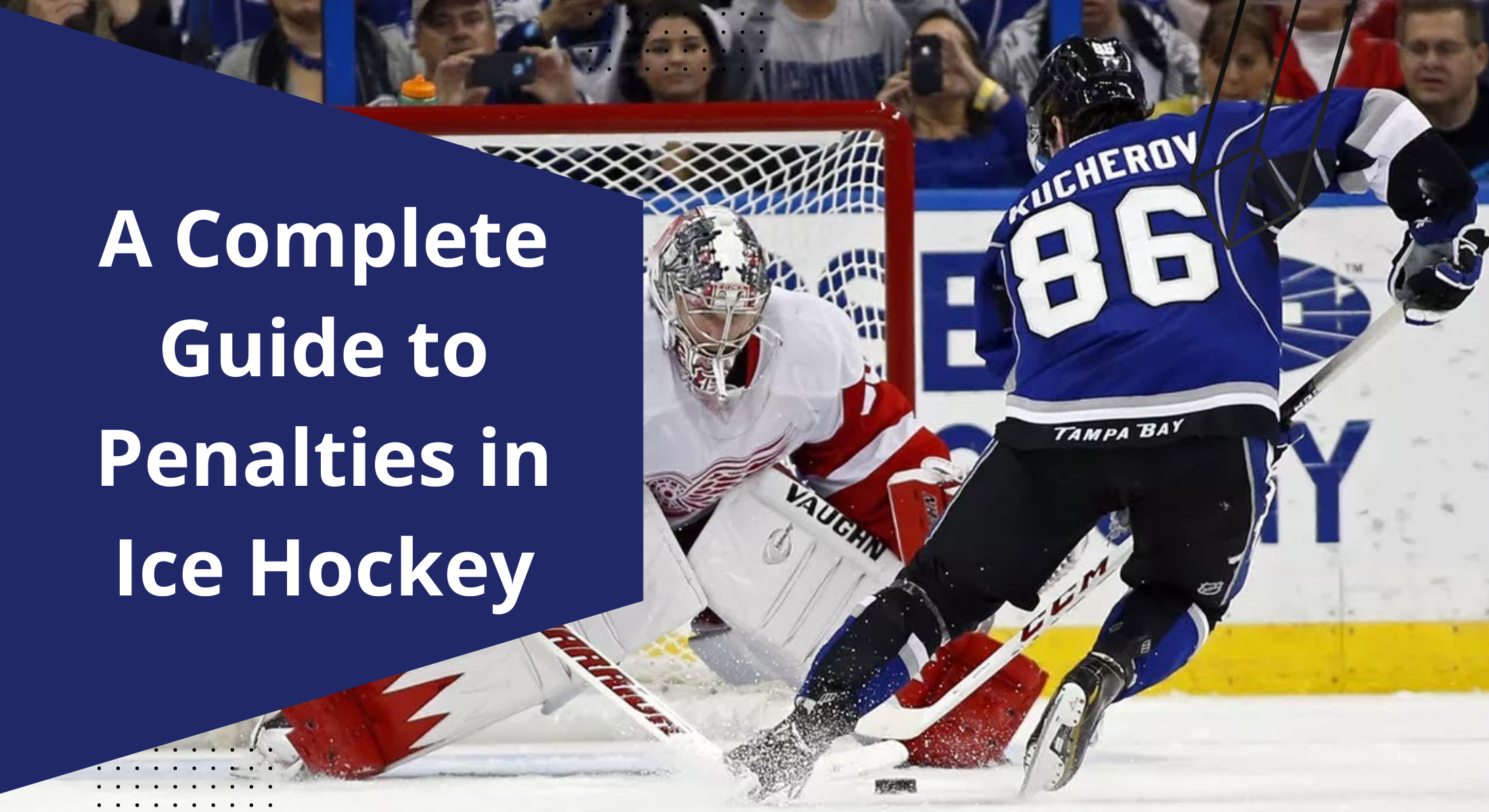It’s important to learn the rules of any sport, and hockey has a number of rules that you’re not permitted to break. I’ve compiled a list of things that can result in a penalty and a trip to the penalty box to help you better understand the rules of the game. The referee will administer a penalty to any player who does anything against the game’s rules. This covers offenses committed on the field, such as elbowing another player or being smacked in the back.
So, why there are penalties in hockey? One of the main purposes of penalties in ice hockey is to punish players for illegal actions that could cause harm to other players. Some of the most common penalties include boarding, elbowing, high-sticking, and cross-checking.
These penalties help to ensure that the game is played safely and fairly by penalizing players who take unnecessary risks or commit dangerous offenses. They also help to keep the game moving along at a fast pace so that players don’t have to spend too much time in the penalty box. All penalties in hockey are discussed in this article.
What are the types of penalties in hockey?
The enjoyment you get from playing hockey will be directly correlated to how well you adhere to the game’s regulations and avoid participating in any behavior forbidden explicitly by those rules. Reading this article will teach you a variety of different strategies that you might use in the future to avoid getting into trouble.
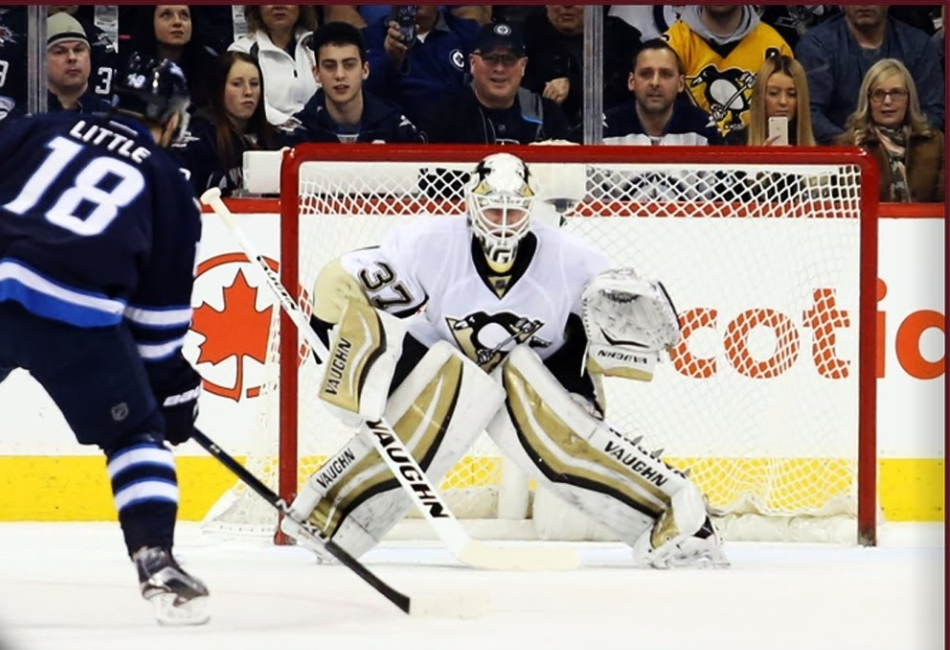
Players who do anything against the game’s rules will be penalized for their behavior. Like the penalties handed out in other sports, basketball has a spectrum of potential sanctions. The seriousness of a crime is inversely related to the punishment that may be imposed and the actual penalty that can be assessed.
Minor Penalty: 2-Minute Penalty
A little punishment is considered to be the least harsh one. If the player who committed the offense is sent to the penalty box, it is nearly sure that his team will suffer. More than eighty percent of all fines are considered to be minor penalties; as a result, they are the most common. As instances of minor corrections, we may include things like slashing, tripping, holding, roughing, interfering, and cross-checking.
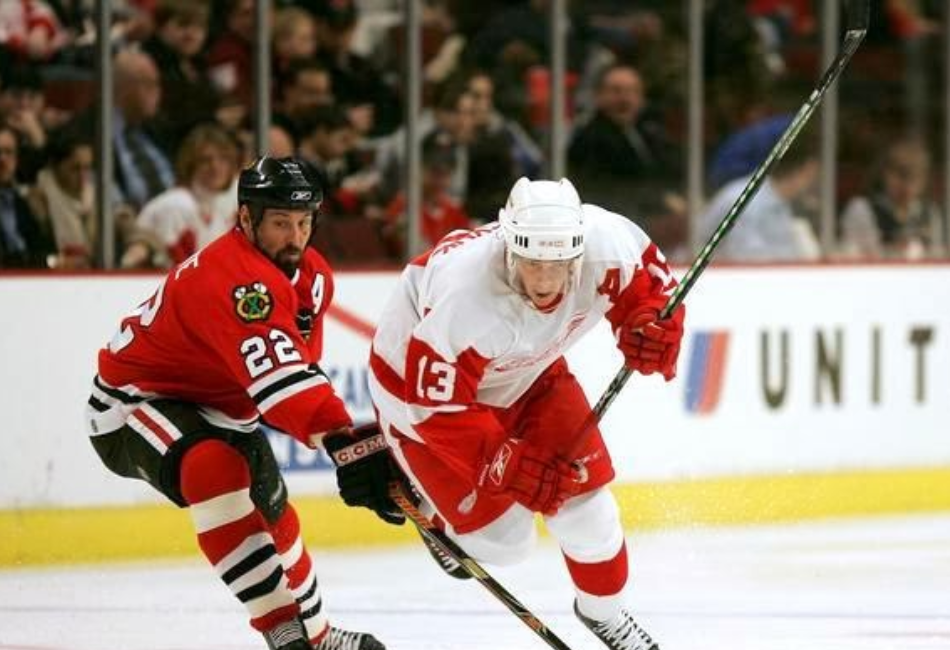
- When a team receives a warning for a minor infraction, they are not allowed to replace players to avoid the penalty, and the process takes two minutes. This regulation should be adhered to by everyone else except the goalie. If the other team has not scored yet, any player on the field must remain within their penalty area for the two-minute time limit.
- A single player may be penalized for two different infractions throughout a single game. If anything like this were to occur, a player would get two separate penalties of four minutes each.
- If a point is scored during the first of the two opportunities to convert a penalty, the second penalty will remain in force for the full two minutes that make up the second penalty period.
- The referee may call for a significant penalty if the high stick is very egregious, but the offender will be assessed two minor penalties.
- The coaching staff and team members who do not participate in games get minor fines. A coach can get a penalty for, for instance, insulting an official or having an excessive number of players on the ice at the same time. A coach can implement a disciplinary measure against an individual player.
Related Post: What is a Penalty Shot in Hockey?
Major Penalty: 5 minutes
A significant fine must be imposed for every rule violation committed in the future, particularly those considered more severe. This law, which specifies that the amount of penalty time a player serves is equivalent to the length of time the player spends in the penalty box, does not apply to the goaltender.
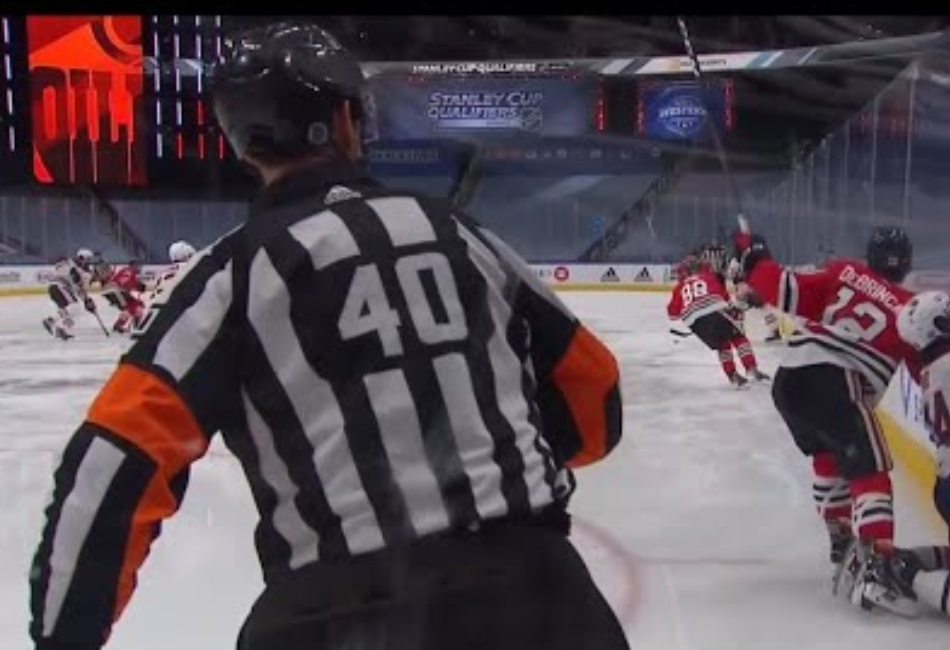
- Even though it accounts for fewer than 5 percent of all penalty calls, fighting is the most common kind of altercation that may result in a penalty. To maintain the team’s cohesiveness, a player must remain on the bench for the remainder of the game if they commit a major foul that lasts 5 minutes.
- Players are only eligible for a 5-minute major if they have completed all of the penalties. The player will not be permitted to leave the penalty area if the other side scores. The side that now has an extra player has a fantastic opportunity to rack up several goals at this point in the game.
- Fights in hockey often result in a significant penalty lasting five minutes. If all of the sentences are even, it is conceivable that the remaining time on the ice will be played with both teams playing five-on-five. Before the game could be resumed, all players were required to have completed their five-minute time penalties.
- Players who accumulate major and minor penalties will increase their total punishment time by 7 minutes for each infraction. When both teams are given significant penalties, the lesser of the corrections shall be served first. However, this rule will not be followed if both teams are charged with severe penalties at the same time. Is it a given that the other person’s side will take vengeance if the first person attacks them? Often for being the one who started the brawl.
Misconduct Penalty: 10 Minutes
A player assessed a misconduct penalty is removed from the game for 10 minutes, during which time the team must play short-handed. However, the player is not replaced on the ice and his team is not allowed to substitute another player for him. Misconduct penalties are often given for verbal abuse or taunting of officials, delay of game, or other non-physical infractions.
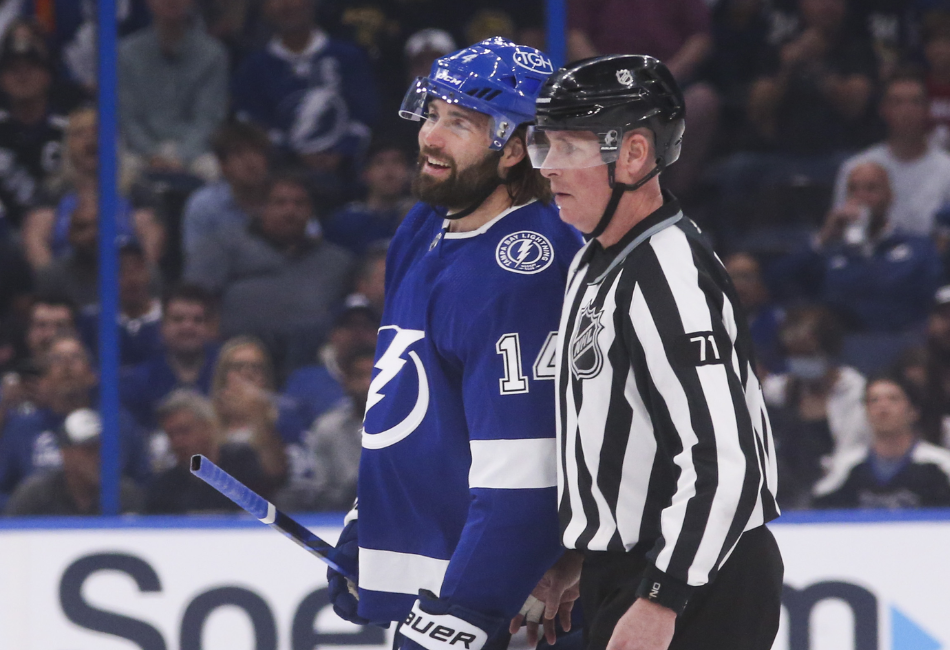
- If a player commits a significant infraction during a game, such as verbally abusing the officials who control the game, that player will be subject to a misconduct penalty. The player will be kicked out of the game if they get this penalty. Upon receiving this punishment, the player will be removed from the game.
- Even if a player on one team is called for a foul that results in a 10-minute punishment, the other team is still permitted to use a player from their bench to replace the player who committed the infraction. This rule applies even if the foul was saved by a player on the same team as the player who was called for the bad.
- If a player is found to be misbehaving, the principal punishment that is meted out to them may not be the only consequence they face due to their conduct. Suppose it is discovered that a player has engaged in unsportsmanlike behavior. In that case, that player will get a 10-minute significant penalty and will also be required to spend an extra two minutes in the penalty box.
- If a player is given a penalty for engaging in unsportsmanlike conduct while participating in a game, they may be disqualified from the tournament. Instead of getting punished for the match, players who engage in uncivilized behavior while the game is in progress will be subject to a charge of a game misconduct. The bigger the offense, the larger the punishment is a general guideline (i.e., abuse of officials, leaving the bench to fight, etc.)
Match penalty: 5 minutes
A match penalty is a severe penalty in ice hockey that is assessed to a player for committing a serious infraction of the rules, such as physical abuse or intent to injure an opponent. A player assessed a match penalty is removed from the game and is suspended for the remainder of the match, as well as for the next match.
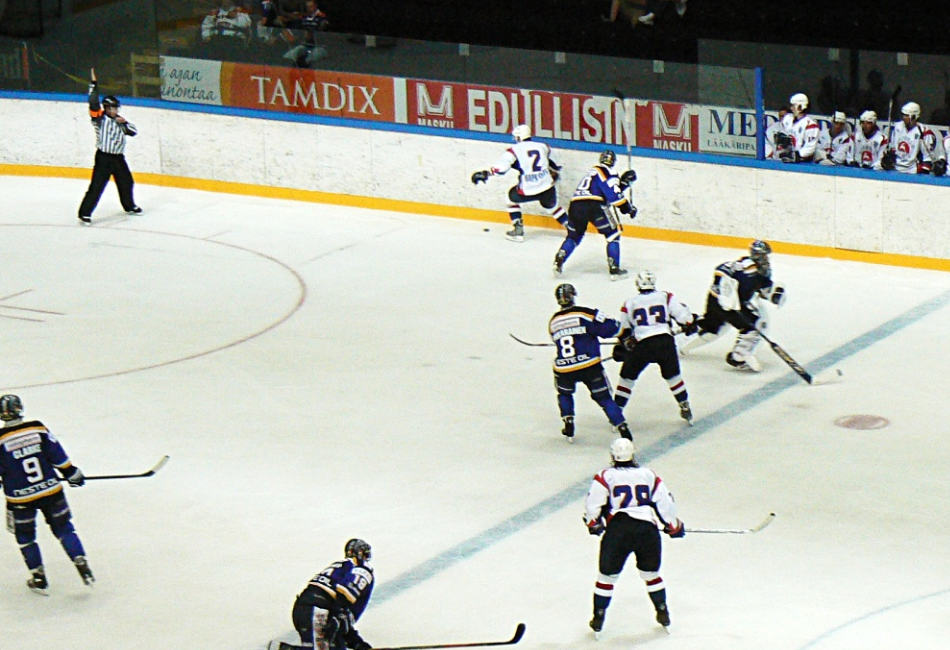
Additionally, the team must play short-handed for the duration of the penalty. The infraction that leads to a match penalty must be reported to the league, which may impose further disciplinary action, such as fines or additional suspensions. Examples of infractions that can result in a match penalty include fighting, head-butting, and hitting an opponent with a stick or other object.
- Suppose a player in the game intends to cause injury to another participant or attempts to do so during the current session of the game. In that case, that person’s turn in the game will be ended, and ejected from the competition. This rule applies to any participant in the game. If there are any more offenses, a team member will be removed from the roster, and under no circumstances will they be able to rejoin the group. This determination will not be overturned either under circumstances.
- As long as there are still a few minutes left in the game, the player will get a penalty that will affect how they are currently positioned in the competition. It was of the utmost importance for them to get off the bench and get back to the locker room as quickly as they could so that they could be prepared for the game that would immediately follow the one in which they were now participating.
- When it comes to penalty shootouts, scoring a goal in the early half of the game might have significant repercussions on your rankings at the end of the match. To ensure that everyone in a team is treated in the same manner, every team member should spend at least five minutes every day tormenting the other group members. Everyone on the team will get the treatment they deserve in this manner.
- At the beginning of a session during which penalties are being handed out, there is a limited period during which such punishments are not permitted to be handed out. The term for this interruption in play is the “penalty break,” which comes from the word “penalty.” Following a break of five minutes, they will have the opportunity to issue a warning to one of their players, and then the game will get underway as normal. It is against the rules to take a player off the ice before the game has been given a fresh start, even though incidents of a similar kind have occurred in the past during NHL contests.
- This rule has been put in place for the sake of everyone’s safety. Even if the athlete is injured, this limitation will still be enforced. This regulation has never been given any consideration for being implemented in the history of the National Hockey League. Following the game’s conclusion, each infraction has to be communicated to the NHL for there to be an additional penalty assessed.
Related Post: What are the rules for fighting in the NHL?
Penalty Shot
A penalty shot allows the player to attempt to score a goal against the opposing team’s goaltender with only the goaltender on the ice as the opposing player. The player taking the penalty shot starts from center ice and must be in motion before crossing the blue line, after that the player has the choice to deke or shoot the puck
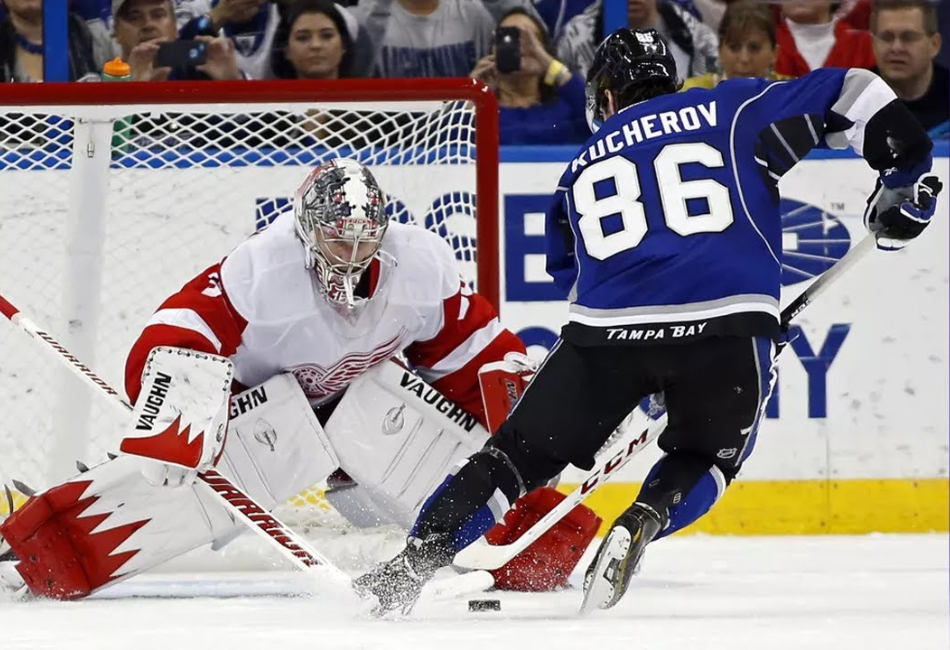
- The penalty kick is often regarded as one of the most thrilling moves in the annals of competition across all types of sports and with good reason. When only two players are remaining on the rink, the only ones who are still participating are the goaltender and one of the players from the opposing side of the rink.
- How exactly will we get to this location regardless of the result of the problem we are now dealing with? If the officer wants to ask for a penalty shot, they must have a valid reason. This suggests that for the official to request the image, they need to have a reasonable expectation that the shooter will have a chance to score without having their shot unfairly blocked.
- A defender may try to trip, slash, or hook an opponent coming from the other direction as the attacking team is trying to create a breakaway. This was a once-in-a-lifetime opportunity, the official said, and it should not have been squandered.
- The odds of scoring a goal on a shot taken during a penalty are much higher than those achieved on a photograph taken during a power play. This is a consequence of the fact that each player is only successful on around 33% of the shots they take, while the team is only successful on 18% of the photographs that they take collectively.
- It is against the rules to give up a penalty shot to have an extra opportunity to score when on the power play. This is because the power play already gives you two chances to score. If a player is given a penalty, they will not earn the two additional minutes of statistical credit that they would have been eligible to receive if they had not gotten the penalty. If they had not received the punishment, they would have been entitled to receive these minutes.
Ice Hockey Minor Penalty Chart
| Minor Penalty | Explanation |
| Boarding | They are pushing or checking with great force against the walls. Ultimately, the checker’s job is to make sure the player is never in a dangerous situation. |
| Broken Stick | The usage of a broken stick is strictly prohibited. The fractured post must be thrown away immediately. |
| Charging | Three steps or getting off one’s feet while finding information about a player is required. |
| Closing hand on the puck | Even if they are skating with the puck, hockey players must dump it immediately. |
| Concealing puck with hand | The player protects the puck from an opponent by putting his hand on the ice. |
| Cross-checking | They are striking a 45-degree opponent with both hands. Referees often don’t penalize defenders who frequently cross-check a striker in front of a goal. The referee prefers fine-tuning an already solid cross-check than starting from scratch. |
| Delay of Game | An example is a goalie sprinting out of the crease to freeze a puck or a team purposefully sending a puck past the net. |
| Elbowing | An opponent is hit in the face by a player’s elbow. |
| Goalkeeper interference | Deliberate contact with a goalkeeper in the crease, regardless of whether or not a body check is used, is illegal. |
| High-sticking | Depending on the intensity of the circumstance, I would use a stick to hit an opponent in either the neck or the face. |
| Holding | Use your hands if everything else fails to stop an opponent’s approach. |
| Holding the stick | In fighting, it’s acceptable to grab and hold onto an opponent’s weapon. |
| Hooking | Catching another player’s foot with the blade of your stick to slow them down. |
| Illegal check to the head | No matter how you do it, you cannot touch your opponent’s head. |
Ice Hockey Major Penalties Chart
| Major Penalties | Self-inflict pain on oneself |
| Boarding | Biting |
| Butt-ending | Boarding |
| Charging | Butt-ending |
| Checking from behind | Charging |
| Clipping | Checking in from the backstage |
| Cross-checking | Clipping |
| Elbowing | Cross-checking |
| Fighting | The deliberate infliction of injury. |
| Head-butting | Elbowing |
| Hooking | Holding the face shield in your hands. |
Frequently Asked Questions
The Nhl, College, High School, and Youth Leagues all have penalties, but how serious are they?
Do you know how many penalties have been committed by a specific team?
What will the NHL do if one of its players is involved in a fight?
What punishments have been put in place to protect the players from ensuring their safety?
Conclusion: A complete guide to penalties in ice hockey?
If it is determined that you have broken any of the various rules that are in place to control the game, then you will be given a punishment. When a player is given a penalty, they are often compelled to sit in the penalty box to carry out their sentence for a certain length of time. It is forbidden for the player to participate in any of the games while the punishment is still in effect. The linesman or the referee may be the ones to call penalties and make sure they’re carried out, but it all depends on the situation.

